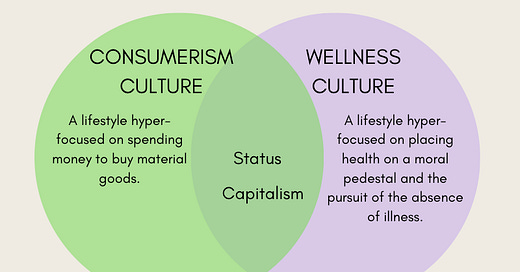Wellness culture and consumerism are cousins
One thing we like to do as a society is flaunt our status. It can be in the form of flaunting and wearing the latest trends or proving our health because we think it demonstrates our worth.
For the past few days, I have been hearing about the Trader Joe’s mini tote bags. I love a good TJ’s haul just like anyone else, and I admit that I go there for the fun vibes more than necessity. There is something about having a store dedicated to snacks and appetizers (if we are being honest) that is intriguing. The produc…
Keep reading with a 7-day free trial
Subscribe to The Nutrition Tea Substack to keep reading this post and get 7 days of free access to the full post archives.





